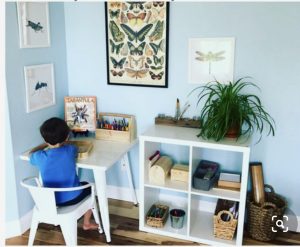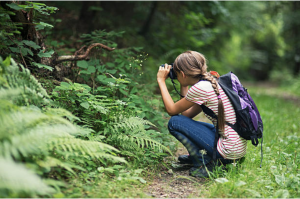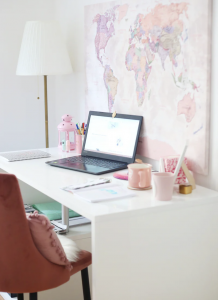A well-prepared physical environment will support your elementary school child to be successful as they learn or continue to organize their own learning goals, skills practice, and project work.
Take time to discuss and prepare workspaces with your child. Consider setting up the following:
- a designated space for reading with comfortable seating and good lighting. Books and devices can be stored neatly nearby.
- an indoor or outdoor project space that is good for movement, easy to clean with supplies available, and large enough to work on big projects will invite your child to think big.
- a desk/workspace in a low distraction zone with a headset, materials for writing or drawing, good lighting, and with login information and passwords posted.
- An area where your child can access everything necessary for an independent snack. This area may also be used for science experiments or art projects.
Organize supplies and materials to facilitate independence. Children who can gather their own materials for an activity, complete the activity, and tidy up afterwards on their own will feel capable, rely less on you, and be able to maintain the home environment. To accomplish this, ensure that materials are easily accessible, well-organized, and limited to only what is needed.
Prepare the Digital Environment The ideal digital environment for the elementary student is safe, uncluttered, and orderly.
Set up your child’s home screen to include only icons related to their learning and set up the browser with only the bookmarked sites that they will need. Remove distracting applications from your child’s device. Be sure to take the time to set up the online environment for safety, keeping
Include the natural world. Dr. Montessori believed that nature should be used to inspire children. Carve out a significant amount of time for your child to be outdoors. Gardening, painting, woodworking, bird- feeding, sweeping, shoveling, are just a few activities in which the children can connect with their outdoor environment.



